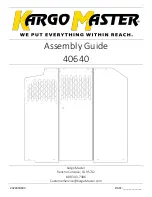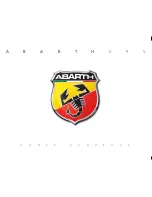
The frontal airbags (driver and right front passenger)
are not intended to inflate during vehicle rollovers, rear
impacts, or in many side impacts because inflation
would not likely help the occupants.
Your vehicle may or may not have a side impact airbag.
See Airbag System on page 1-72. Side impact airbags
are designed to inflate in moderate to severe side
crashes. A side impact airbag will inflate if the crash
severity is above the system’s designed “threshold
level.” The threshold level can vary with specific vehicle
design. Side impact airbags are not designed to
inflate in frontal or near-frontal impacts, rollovers or rear
impacts, because inflation would not likely help the
occupant. A side impact airbag will only deploy on the
side of the vehicle that is struck.
In any particular crash, no one can say whether an
airbag should have inflated simply because of the
damage to a vehicle or because of what the repair costs
were. For frontal airbags, inflation is determined by
the angle of the impact and how quickly the vehicle
slows down in frontal and near-frontal impacts. For side
impact airbags, inflation is determined by the location
and severity of the impact.
What Makes an Airbag Inflate?
In an impact of sufficient severity, the airbag sensing
system detects that the vehicle is in a crash. For both
frontal and side impact airbags, the sensing system
triggers a release of gas from the inflator, which inflates
the airbag. The inflator, the airbag and related hardware
are all part of the airbag modules. Frontal airbag modules
are located inside the steering wheel and instrument
panel. For vehicles with side impact airbags, the airbag
modules are located in the seatback closest to the
driver’s and/or right front passenger’s door.
How Does an Airbag Restrain?
In moderate to severe frontal or near frontal collisions,
even belted occupants can contact the steering wheel or
the instrument panel. In moderate to severe side
collisions, even belted occupants can contact the inside
of the vehicle. The airbag supplements the protection
provided by safety belts. Airbags distribute the force of
the impact more evenly over the occupant’s upper body,
stopping the occupant more gradually. But the frontal
airbags would not help you in many types of collisions,
including rollovers, rear impacts, and many side impacts,
primarily because an occupant’s motion is not toward the
airbag. Side impact airbags would not help you in many
types of collisions, including frontal or near frontal
collisions, rollovers, and rear impacts, primarily because
an occupant’s motion is not toward those airbags.
1-78
Summary of Contents for 2005 Uplander
Page 5: ...These are some examples of symbols that may be found on the vehicle v ...
Page 6: ... NOTES vi ...
Page 30: ...Put someone on it Get it up to speed Then stop the vehicle The rider doesn t stop 1 24 ...
Page 94: ... NOTES 1 88 ...
Page 152: ... NOTES 2 58 ...
Page 155: ... NOTES 3 3 ...
Page 156: ...Instrument Panel Overview 3 4 ...
Page 326: ...Engine Compartment Overview When you open the hood here is what you will see 5 12 ...
Page 416: ... NOTES 5 102 ...
















































